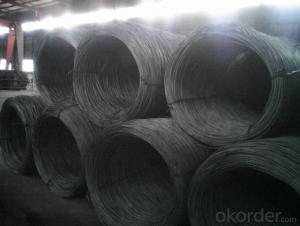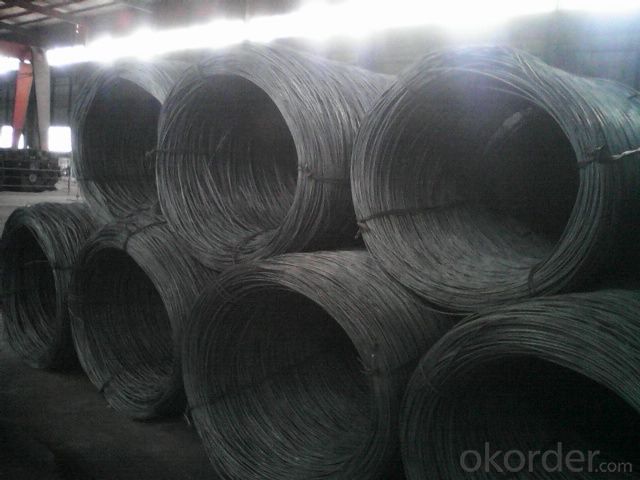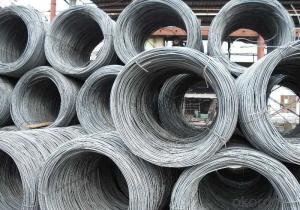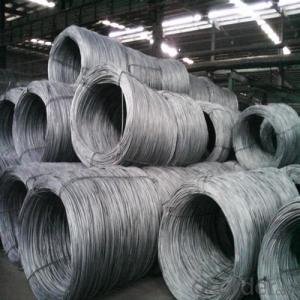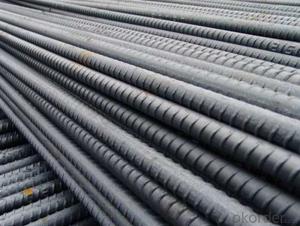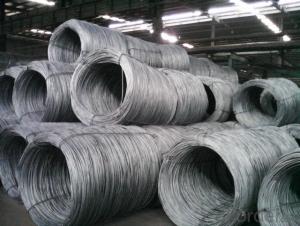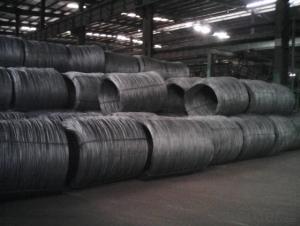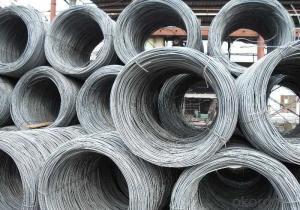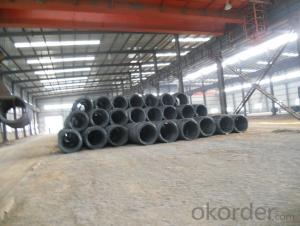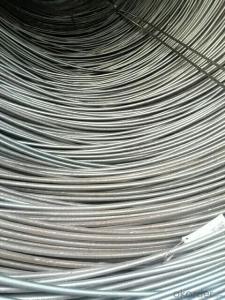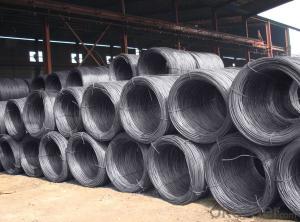Hot Rolled Steel Wire Rod SAE1006-1018 for Making Steel Wire Mesh and Nail
- Loading Port:
- Tianjin
- Payment Terms:
- TT or LC
- Min Order Qty:
- 25 m.t.
- Supply Capability:
- 200000 m.t./month
OKorder Service Pledge
OKorder Financial Service
You Might Also Like
Product Description:
We can offer Hot Rolled Steel Wire Rod SAE1006-1018 for Making Steel Wire Mesh and Nail at great prices with worldwide shipping. Our supplier is a world-class manufacturer of steel, with our products utilized the world over. OKorder annually supplies products to European, North American and Asian markets. We provide quotations within 24 hours of receiving an inquiry and guarantee competitive prices.
Product Applications:
Hot Rolled Steel Wire Rod SAE1006-1018 for Making Steel Wire Mesh and Nail are ideal for structural applications and are widely used in the construction of buildings and bridges, and the manufacturing, petrochemical, and transportation industries. After hot-rolled the products shaped into coil and delivery as finished product, including round, square,rectangular, hexagonal and so on. Since most of the products are round, it is generally called wire rod. Carbon steel wire rod is widely used in construction and manufacturing. Carbon steel wire rod is mainly used for reinforcement of reinforced concrete and welded structure or reprocessed (roberts , nail, etc.) materials, especially used to produce wire drawing, welding electrode, nails, spring, electronic, precise machinery parts and so on.
Product Advantages:
OKorder's Hot Rolled Steel Wire Rod SAE1006-1018 for Making Steel Wire Mesh and Nail are durable, strong, and resist corrosion.
Main Product Features:
· Premium quality
· Prompt delivery & seaworthy packing (30 days after receiving deposit)
· Corrosion resistance
· Can be recycled and reused
· Mill test certification
· Professional Service
· Competitive pricing
Specifications of Hot Rolled Steel Wire Rod SAE1006-1018 for Making Steel Wire Mesh and Nail:
Grade: Q235 Standard: GB
Diameter: 5.5mm, 6.5mm, 7mm, 8mm, 9mm, 10mm, 11mm, 12mm
Alloy or Not: Alloy
Technique: Hot Rolled Place of Origin: China Mainland
Chemical Composition:
Please kindly find our chemistry of our material based on Q235 as below for your reference:
Trademark | Rank | Chemical composition (quality score) % | |||||
C | Si | Mn | S | P | |||
≤ | ≤ | ≤ | |||||
Q235 | A | 0.14-0.22 | 0.30 | 0.30-0.65 | 0.050 | 0.045 | |
Q235 | B | 0.12-0.20 | 0.30 | 0.30-0.70 | 0.045 | 0.045 | |
Trademark | Rank | Pulling Test | |||||
Bend PointΔs/Mpa | Tensile Strength | Elongation Ratioδ5% | |||||
Thickness (Diameter) /MM | Thickness (Diameter) /MM | ||||||
≤16 | 16-40 | ≤16 | 16-40 | ||||
≥ | ≥ | ||||||
Q235 | A | 235 | 225 | 375-500 | 26 | 25 | |
Q235 | B | 235 | 225 | 375-500 | 26 | 25 | |
Packaging & Delivery of Hot Rolled Steel Wire Rod SAE1006-1018 for Making Steel Wire Mesh and Nail:
Packaging Detail: products are packed in coil and then shipped by container or bulk vessel
Each coil weight: About 2.05MT
Delivery Detail: within 45 days after received deposit or LC.
Label: to be specified by customer, generally, each bundle has 1-2 labels
Trade terms: FOB, CFR, CIF
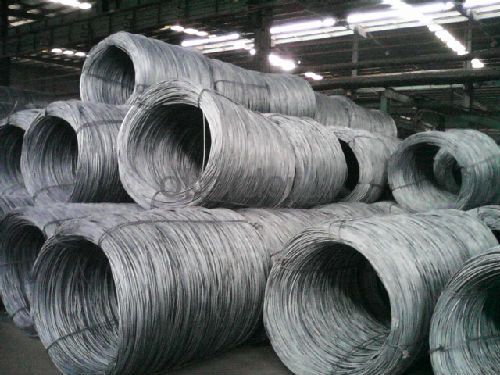
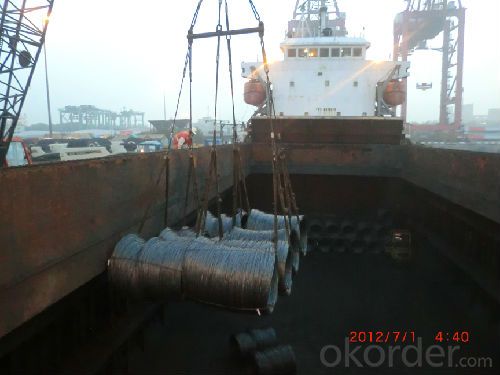
FAQ:
Q1: Why buy Hot Rolled Steel Wire Rod SAE1006-1018 for Making Steel Wire Mesh and Nail from OKorder.com?
A1: All products offered byOKorder.com are carefully selected from China's most reliable manufacturing enterprises. Through its ISO certifications, OKorder.com adheres to the highest standards and a commitment to supply chain safety and customer satisfaction.
Q2: How do we guarantee the quality of our products?
A2: We have established an advanced quality management system which conducts strict quality tests at every step, from raw materials to the final product. At the same time, we provide extensive follow-up service assurances as required.
Q3: How soon can we receive the product after purchase?
A3: Within three days of placing an order, we will begin production. The specific shipping date is dependent upon international and government factors, but is typically 7 to 10 workdays.
- Q: How are steel wire rods used in the production of barbed wire for security fencing?
- In the production of security fencing, steel wire rods are essential. They are used to create the twisted and sharp barbs that provide deterrence and protection. To begin the process, the steel wire rods are drawn through a series of dies. This reduces their diameter and increases their length, a process known as wire drawing. It improves the strength and durability of the wire. Once the wire rods have been drawn, they are twisted together to form a strong, continuous strand of wire. This twisted wire serves as the backbone of the barbed wire, providing stability and support. Next, the twisted wire is interwoven with sharp, pointed barbs. These barbs are made by cutting short lengths of the wire rods, sharpening the ends, and attaching them to the twisted wire at regular intervals. The placement and spacing of the barbs are strategic to maximize the security and deterrent effect of the barbed wire. After attaching the barbs, the barbed wire is typically galvanized to enhance its resistance to corrosion. The galvanization process involves coating the wire with a layer of zinc, providing a protective barrier against rust and environmental factors. This ensures the barbed wire remains strong and effective in various weather conditions. Once the galvanized barbed wire is produced, it can be wound onto spools or packaged in coils for easy transportation and installation. It is then ready to be installed as a security measure, typically on top of fences, walls, or other structures requiring additional protection. In conclusion, steel wire rods are crucial in the production of barbed wire for security fencing. They are transformed into twisted wire strands, which form the backbone of the barbed wire. Combined with sharp barbs, they create an effective deterrent. The use of steel wire rods ensures the barbed wire is strong, durable, and capable of withstanding harsh conditions, making it an essential component in security fencing systems.
- Q: What are the recent developments and innovations in steel wire rod production?
- Some recent developments and innovations in steel wire rod production include the introduction of advanced wire rod mills that utilize high-speed rolling technologies, such as the MEERdrive® system, to increase productivity and improve product quality. Additionally, there have been advancements in the use of automation and artificial intelligence to optimize the production process, reducing energy consumption and minimizing waste. Furthermore, manufacturers are investing in research and development to develop new alloys and coatings that enhance the strength, durability, and corrosion resistance of steel wire rods, expanding their applications in diverse industries such as automotive, construction, and aerospace.
- Q: How is steel wire rod used in the production of wire mesh for filtration purposes?
- Steel wire rod is an essential component in the production of wire mesh for filtration purposes. Wire mesh is a material made of interconnected wires forming a grid pattern, which allows the passage of air or liquid while retaining solid particles. Steel wire rods provide the raw material for manufacturing the wires used in wire mesh. To produce wire mesh, steel wire rods are first heated and drawn through a series of dies to reduce their diameter. This process is known as wire drawing and is used to obtain wires of the desired thickness. The drawn wires are then further processed to achieve the required characteristics for filtration purposes. The steel wire rods used for wire mesh production are typically made from carbon steel, which is known for its strength and durability. This makes the resulting wires strong enough to withstand the pressure and stress they will encounter during the filtration process. Once the wires are ready, they are woven or welded together to create the wire mesh. The specific weaving or welding technique used depends on the desired characteristics of the wire mesh, such as its mesh size and strength. The resulting wire mesh consists of a network of interlocking wires, forming a strong and stable structure. Wire mesh produced from steel wire rods is widely used in various filtration applications. It is commonly employed in industries such as oil and gas, chemical processing, water treatment, and food processing. The fine grid pattern of the wire mesh allows for efficient filtration by trapping and retaining solid particles while allowing the passage of air or liquid. In summary, steel wire rods play a crucial role in the production of wire mesh for filtration purposes. They are transformed into wires through a process of drawing and are then woven or welded together to create the wire mesh. This wire mesh is widely used for its strength and durability in various industries, providing efficient filtration capabilities for a range of applications.
- Q: How is steel wire rod used in the manufacturing of automotive seat frames?
- Steel wire rod is commonly used in the manufacturing of automotive seat frames due to its high strength and durability properties. The steel wire rod is typically formed into different shapes and sizes to create the framework for automotive seats. These seat frames provide structural support and stability to the seats, ensuring they can withstand the weight and movements of passengers. The steel wire rod is first processed through various manufacturing techniques such as hot rolling, cold drawing, and heat treatment to achieve the desired mechanical properties. This process ensures that the steel wire rod has the necessary strength and flexibility to withstand the constant stress and load-bearing requirements of automotive seat frames. Once the steel wire rod is prepared, it is then bent and shaped into the required form using specialized machinery. This allows manufacturers to create different seat frame designs that meet the specific requirements of different vehicle models. The steel wire rod is often welded or joined together at specific points to form a sturdy and stable seat frame structure. The use of steel wire rod in automotive seat frames offers several advantages. Firstly, steel is known for its high strength-to-weight ratio, making it an ideal material for supporting heavy loads without adding excessive weight to the vehicle. Additionally, steel wire rod has excellent corrosion resistance properties, ensuring that seat frames remain durable and long-lasting even in harsh environmental conditions. Moreover, steel wire rod provides flexibility in design and customization. Manufacturers can easily modify the shape and size of the seat frames to accommodate various seat configurations and ergonomic requirements. This allows for the production of comfortable and safe seating options for passengers. In summary, steel wire rod is essential in the manufacturing of automotive seat frames due to its strength, durability, and customization capabilities. It provides the necessary structural support and stability to ensure the safety and comfort of vehicle occupants.
- Q: What are the quality control measures for steel wire rod production?
- Quality control measures for steel wire rod production typically include the inspection of raw materials, such as the chemical composition and physical properties of the steel, as well as the monitoring of the manufacturing process, such as checking for defects, surface quality, and dimensional accuracy. Additionally, testing procedures such as tensile strength, hardness, and ductility tests are performed to ensure the quality and reliability of the steel wire rods.
- Q: How is steel wire rod classified based on its diameter?
- Steel wire rod is classified based on its diameter into various categories. The classification is typically done using a wire gauge system or by specifying the diameter directly in millimeters. The wire gauge system assigns a numerical value to different wire diameters, with higher numbers indicating thinner wires. For example, in the United States, the American Wire Gauge (AWG) system is commonly used. In this system, the thickest wire is assigned the gauge number 0000 (four zeros), while the thinnest wire has a gauge number of 40. Each gauge number corresponds to a specific diameter range. Alternatively, steel wire rod can also be classified based on its diameter in millimeters. This approach directly specifies the exact diameter of the wire rod, allowing for more precise classification. For example, a wire rod with a diameter of 5.5 mm would be classified as such. Both methods of classification provide a standardized way to categorize steel wire rod based on its diameter. This information is important for various industries that utilize steel wire rod, such as construction, automotive, and manufacturing, as it allows them to select the appropriate wire rod for their specific applications.
- Q: How is steel wire rod used in the manufacturing of cables?
- Steel wire rod is used in the manufacturing of cables as it serves as the primary material for the inner core strength of the cables. The rod is typically drawn down to the desired diameter, providing high tensile strength and durability to the cables. This ensures that the cables can withstand the tension and stress they may encounter during their use, making them suitable for various applications such as power transmission, telecommunications, and construction.
- Q: What are the different factors that affect the mechanical properties of steel wire rod?
- The different factors that affect the mechanical properties of steel wire rod include the composition of the steel, the manufacturing process used, the heat treatment applied, the presence of impurities or defects, the grain size and orientation, the level of cold work or deformation, and the environmental conditions during use.
- Q: What are the main steel wire rod import and export markets?
- Depending on the country and region, the main markets for importing and exporting steel wire rod vary. However, China, the United States, Japan, Germany, South Korea, and Russia are key players in the global steel wire rod trade. China, being the largest producer and consumer of steel wire rod, has a significant presence in the export market. It exports steel wire rod to various destinations, including Southeast Asian countries, the United States, and Europe. The United States is also a major player in the steel wire rod market. It imports substantial amounts of steel wire rod from Canada, Mexico, and Brazil. Additionally, the United States exports steel wire rod to Canada and Mexico. Japan, known for its high-quality steel products, both imports and exports steel wire rod. It primarily imports steel wire rod from South Korea, China, and Taiwan, while its main export destinations include Southeast Asian countries and the United States. Germany is a significant market for steel wire rod in Europe. It mainly imports steel wire rod from Russia, Turkey, and Ukraine. Germany also exports steel wire rod to neighboring European countries. South Korea is a major exporter of steel wire rod, primarily to Vietnam, Malaysia, and the United States. It also imports steel wire rod from China, Japan, and Russia. Lastly, Russia plays an important role in the steel wire rod market as both an exporter and importer. It exports steel wire rod to various countries, including Germany, Italy, and Turkey. Russia also imports steel wire rod from South Korea and China. In conclusion, these countries dominate the global steel wire rod import and export markets, each with its own unique position and trade partnerships. However, it is important to note that the steel industry is dynamic, and market conditions can change over time, affecting import and export dynamics.
- Q: How does steel wire rod compare to other materials in terms of strength and durability?
- The market widely recognizes steel wire rod as one of the strongest and most durable materials available. When compared to alternatives such as aluminum or copper, steel wire rod stands out for its superior strength and durability. To begin with, steel wire rod possesses exceptional tensile strength, enabling it to endure substantial pulling forces without breaking or deforming. This strength proves crucial in applications where the material faces heavy loads or high-stress conditions. In contrast, aluminum or copper wire rod typically exhibits lower tensile strength, making them more susceptible to deformation or breakage under similar circumstances. Furthermore, steel wire rod showcases remarkable durability owing to its resistance to corrosion, wear, and fatigue. Steel naturally possesses the ability to withstand adverse environmental conditions, making it suitable for various harsh environments, including outdoor or marine applications. Conversely, materials like aluminum or copper are more prone to corrosion and wear, which can compromise their strength and longevity over time. Moreover, steel wire rod offers excellent structural integrity, allowing it to retain its strength and shape even when exposed to extreme temperatures or heavy mechanical stress. This characteristic makes steel wire rod highly suitable for demanding applications where safety and reliability are of paramount importance, such as the construction, automotive, or aerospace industries. In comparison, materials like aluminum or copper may experience greater deformation or loss of strength under similar conditions. In conclusion, steel wire rod surpasses other materials in terms of strength and durability. Its exceptional tensile strength, resistance to corrosion and wear, as well as its ability to withstand extreme conditions, make it the preferred choice in numerous industries. Whether utilized for structural purposes, reinforcement, or support, steel wire rod consistently delivers superior performance, ensuring reliability and longevity in various applications.
Send your message to us
Hot Rolled Steel Wire Rod SAE1006-1018 for Making Steel Wire Mesh and Nail
- Loading Port:
- Tianjin
- Payment Terms:
- TT or LC
- Min Order Qty:
- 25 m.t.
- Supply Capability:
- 200000 m.t./month
OKorder Service Pledge
OKorder Financial Service
Similar products
Hot products
Hot Searches
Related keywords
